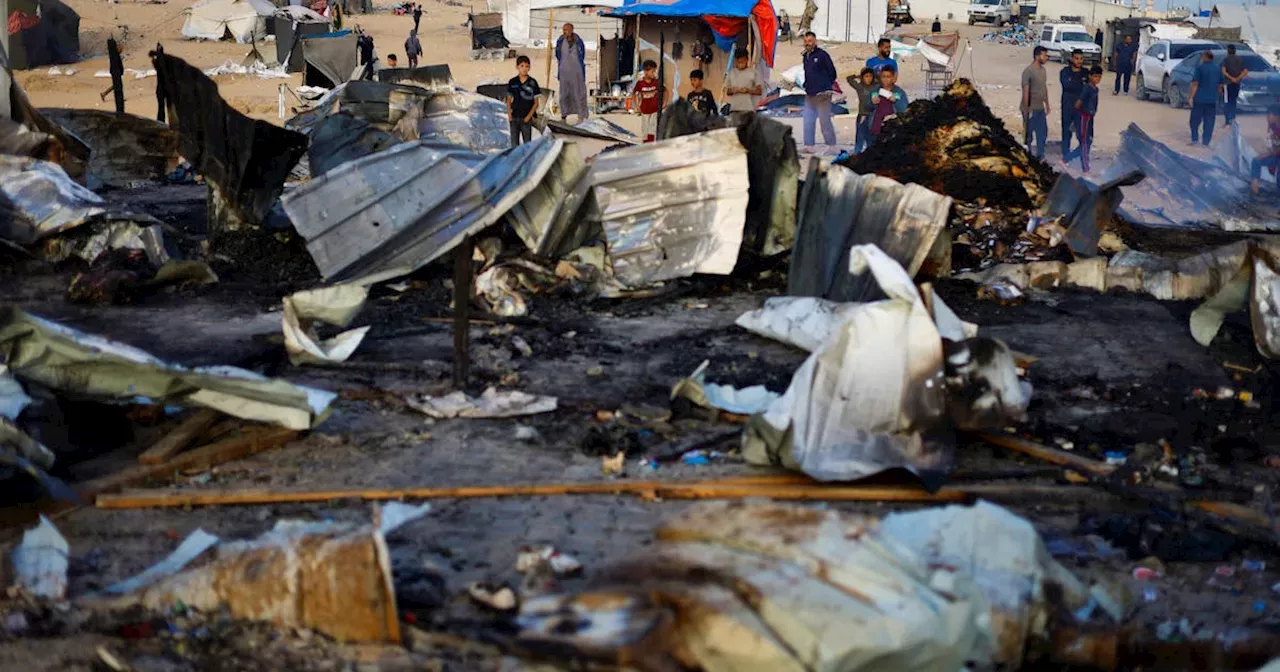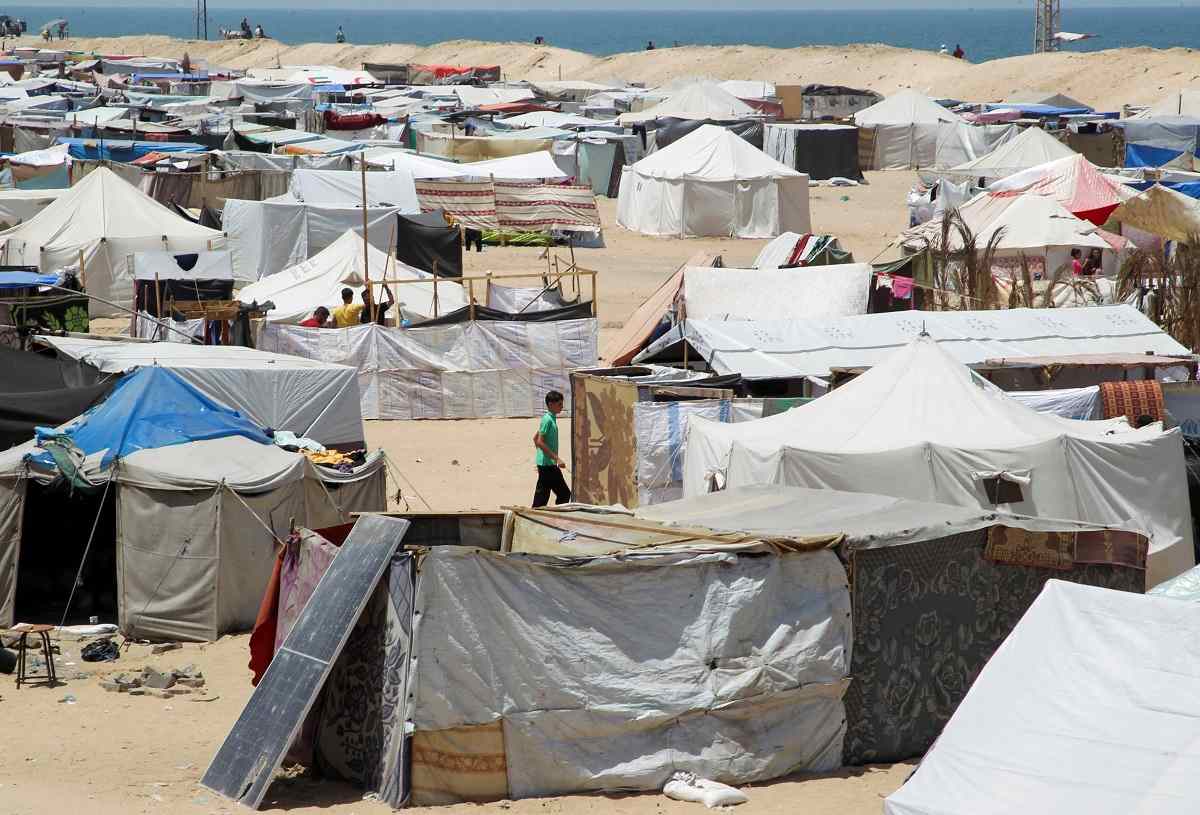History and Background of Rafah Tent Camp

The Rafah Tent Camp, also known as the Rafah Refugee Camp, was established in May 1948 in the aftermath of the 1948 Arab-Israeli War. It is located in the southern Gaza Strip, near the Egyptian border.
The camp was initially set up to provide temporary shelter for Palestinian refugees who had fled their homes during the war. However, the camp has become a permanent home for many of these refugees, and it is now one of the largest and most densely populated refugee camps in the world.
The Rafah Tent Camp is a symbol of the Palestinian refugee crisis. It is a reminder of the displacement and suffering that has been caused by the Israeli-Palestinian conflict. The camp is also a testament to the resilience of the Palestinian people, who have managed to maintain a sense of community and identity despite the difficult conditions in which they live.
Purpose and Goals of the Camp
The Rafah Tent Camp was established to provide shelter for Palestinian refugees who had been displaced by the 1948 Arab-Israeli War. The camp was also intended to provide basic services, such as food, water, and healthcare, to the refugees.
In the years since its establishment, the Rafah Tent Camp has become a permanent home for many of the refugees who live there. The camp has its own schools, clinics, and mosques. It is also home to a number of community organizations that provide services to the refugees.
The Rafah Tent Camp is a symbol of the Palestinian refugee crisis. It is a reminder of the displacement and suffering that has been caused by the Israeli-Palestinian conflict. The camp is also a testament to the resilience of the Palestinian people, who have managed to maintain a sense of community and identity despite the difficult conditions in which they live.
Current Conditions and Challenges: Rafah Tent Camp
The living conditions within the Rafah Tent Camp are dire. The camp is overcrowded, with an estimated 1,000 residents living in close quarters. The tents are small and provide little protection from the elements. In the summer, the heat can be unbearable, and in the winter, the cold can be equally severe. The camp is also located in a flood-prone area, and residents are often forced to evacuate during heavy rains.
Access to Basic Necessities
Residents of the Rafah Tent Camp face significant challenges in accessing basic necessities such as food, water, and sanitation. The camp is not connected to any water or sewage system, and residents must rely on handouts from international organizations or purchase water from private vendors. Food is also scarce, and residents often go hungry. The camp also lacks adequate sanitation facilities, and residents are forced to use makeshift latrines.
Healthcare and Education
Healthcare and education are also major challenges for residents of the Rafah Tent Camp. The camp does not have a permanent health clinic, and residents must travel to nearby towns or cities to receive medical care. Education is also limited, and there are only a few schools in the camp. The schools are overcrowded and lack basic resources, such as textbooks and supplies.
Role of International Organizations, Rafah tent camp
International organizations play a vital role in providing aid and support to the residents of the Rafah Tent Camp. These organizations provide food, water, and sanitation services, as well as healthcare and education. They also advocate for the rights of the residents and work to improve their living conditions.
Political and Humanitarian Implications

The Rafah Tent Camp’s existence has far-reaching political and humanitarian implications. It symbolizes the ongoing humanitarian crisis in Gaza, highlighting the plight of displaced Palestinians and the failure of international efforts to resolve the conflict. The camp’s presence also strains regional stability, as it serves as a constant reminder of the unresolved Palestinian-Israeli conflict and a potential flashpoint for violence.
Impact on Regional Stability and International Relations
The Rafah Tent Camp has become a focal point of regional tensions. Its proximity to the Gaza-Egypt border makes it a potential source of instability, as it could be used by militants to infiltrate Egypt or launch attacks against Israel. The camp’s presence also complicates international relations, as it draws attention to the unresolved Palestinian-Israeli conflict and the need for a just and lasting solution.
Ongoing Efforts to Resolve the Situation
There have been ongoing efforts to resolve the situation at the Rafah Tent Camp. International organizations, including the United Nations, have called for the immediate closure of the camp and the provision of alternative housing for the displaced Palestinians. However, these efforts have been hampered by political obstacles and the lack of a comprehensive solution to the Palestinian-Israeli conflict.
The Rafah Tent Camp, established in 2005, houses displaced Palestinians living in harsh conditions. Among them are the “Rafah babies,” a group of infants born with severe health issues due to the camp’s poor sanitation and lack of medical care ( rafah babies ).
The camp remains a symbol of the ongoing humanitarian crisis in Gaza, a reminder of the plight of those who have lost their homes and the urgency of addressing their basic needs.
The Rafah Tent Camp, a makeshift settlement on the Egypt-Gaza border, has become a symbol of the ongoing humanitarian crisis in the region. All eyes are on Rafah , as international aid organizations and human rights groups call for an end to the violence and displacement that has plagued the camp and its inhabitants.
The tragedy at the Rafah tent camp, where dozens of Palestinian refugees were killed in an Israeli airstrike, was compounded by the horrific discovery of a beheaded baby. The beheaded baby rafah became a symbol of the brutality of the conflict, highlighting the suffering of innocent civilians caught in the crossfire.
The Rafah tent camp remains a testament to the human cost of war, a reminder of the need for peace and reconciliation.
The relentless shelling of the Rafah tent camp has left a devastating toll on its inhabitants. The heartbreaking video of a young child’s lifeless body, caught in the crossfire, has shocked the world. This tragedy highlights the desperate plight of the camp’s residents, who have endured unimaginable suffering amidst the ongoing conflict.
The Rafah tent camp, a temporary shelter for Palestinians displaced by the ongoing conflict in the Gaza Strip, has become a symbol of both hope and despair. The camp is home to over 1,000 families, many of whom have lost their homes and loved ones in the violence.
Among the most tragic stories to emerge from Rafah is the beheaded babies in rafah. These innocent victims of the conflict have been used as a propaganda tool by both sides, and their deaths have only served to further fuel the cycle of violence.
Despite the horrors they have endured, the people of Rafah tent camp remain resilient. They continue to hope for a better future, and they continue to fight for their rights.